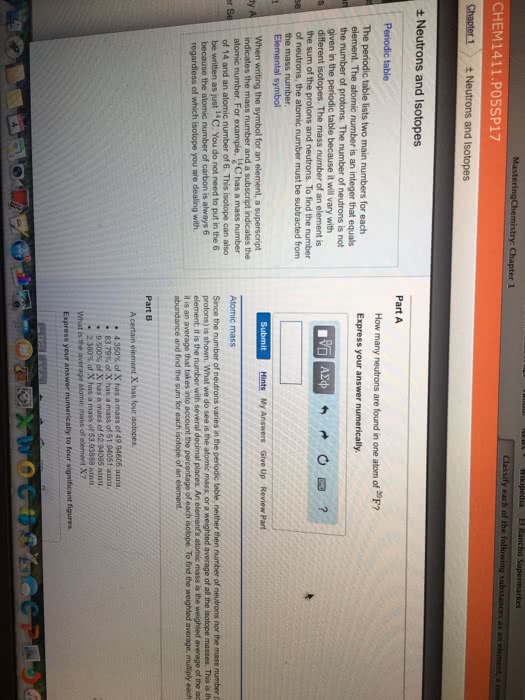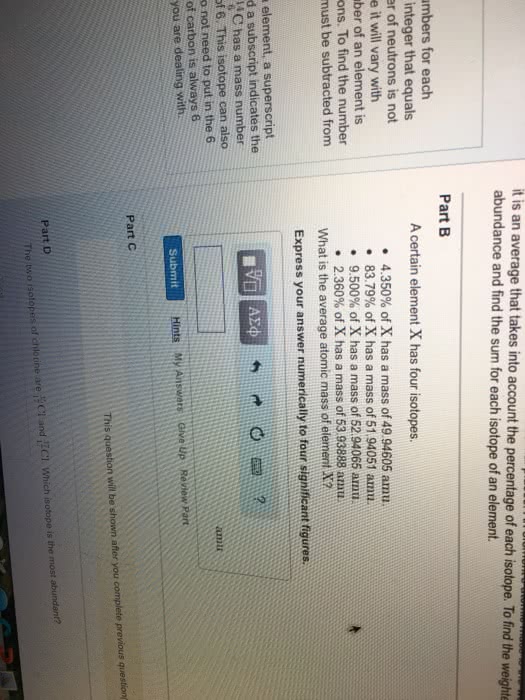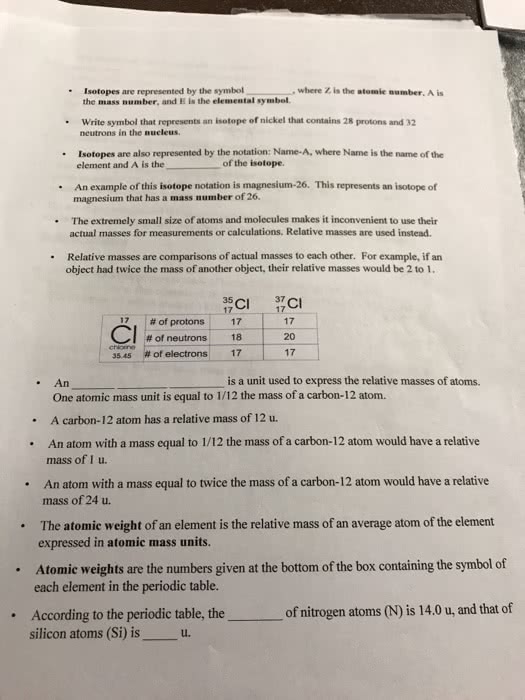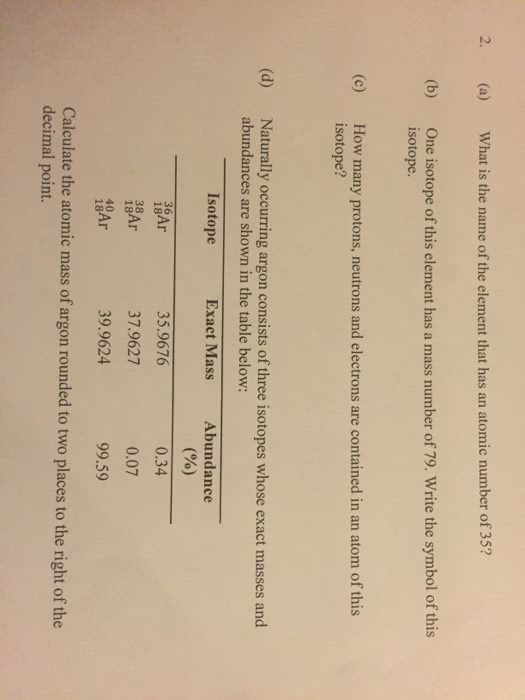CHEM 24112 Lecture Notes - Lecture 13: Alkaline Earth Metal, Bromine, Noble Metal

CHEMISTRY 112 – DAY 13 Chapter 4: Sections 7-11
2/9
ISOTOPES, THE PERIODIC TABLE, IONS
Goals: To learn about the terms isotope, atomic number, and mass number. To understand the use of
the symbol to describe a given atom. To learn about various features of the periodic table. To learn
some of the properties of metals, nonmetals, and metalloids. To learn the natural states of the common
elements. To understand the formation of ions from their parent atoms, and learn to name them. To
learn how the periodic table can help predict which ion a given element forms. To learn how ions
combine to form neutral compounds.
Isotopes
Atoms with the same number of protons but different numbers of neutrons.
Show almost identical chemical properties; chemistry of atom is due to its electrons.
In nature most elements contain mixtures of isotopes.
X = the symbol of the element
A = the mass number (# of protons and neutrons)
Z = the atomic number (# of protons)
Isotopes – An Example
C = the symbol for carbon
6 = the atomic number (6 protons)
14 = the mass number (6 protons and 8
neutrons)
C = the symbol for carbon
6 = the atomic number (6 protons)
12 = the mass number (6 protons and 6
neutrons)
Exercise
A certain isotope X contains 23 protons and 28 neutrons. What is the mass number of this isotope? Write
the atomic symbol of this isotope? Identify the element.
The Periodic Table
The periodic table shows all of the known elements in order of increasing atomic number.
Metals vs. Nonmetals
Groups or Families – elements in the same vertical columns; have similar chemical properties
Periods – horizontal rows of elements
find more resources at oneclass.com
find more resources at oneclass.com

Most elements are metals and occur on the left side.
The nonmetals appear on the right side.
Metalloids are elements that have some metallic and some nonmetallic properties.
Physical Properties of Metals
Efficient conduction of heat and electricity
Malleability (they can be hammered into thin sheets)
Ductility (they can be pulled into wires)
A lustrous (shiny) appearance
Physical Properties of Nonmetals
Lack properties of metals
Exhibit much variation in properties
Can be gases, liquids, or solids
Physical Properties of Metalloids
Exhibit a mixture of metallic and non-metallic properties
Groups or Families
Group 1 – Alkali Metals
Group 2 – Alkaline Earth Metals
Groups 3-12 – Transition Metals
Bottom Two Rows – Inner Transition Metals
Group 13 – Boron Group
Group 14 – Carbon Group
Group 15 – Nitrogen Group
Group 16 – Chalcogens
Group 17– Halogens
Group 18 – Noble Gases
Periods
Periods identified by Row #.
Practice
What alkaline earth metal can be found in Period 6?
What element is found in Period 3 in the Carbon group?
find more resources at oneclass.com
find more resources at oneclass.com
Document Summary
Goals: to learn about the terms isotope, atomic number, and mass number. To understand the use of the symbol to describe a given atom. To learn about various features of the periodic table. To learn some of the properties of metals, nonmetals, and metalloids. To learn the natural states of the common elements. To understand the formation of ions from their parent atoms, and learn to name them. To learn how the periodic table can help predict which ion a given element forms. To learn how ions combine to form neutral compounds. Atoms with the same number of protons but different numbers of neutrons. Show almost identical chemical properties; chemistry of atom is due to its electrons. In nature most elements contain mixtures of isotopes. A = the mass number (# of protons and neutrons) Z = the atomic number (# of protons) 14 = the mass number (6 protons and 8 neutrons)





